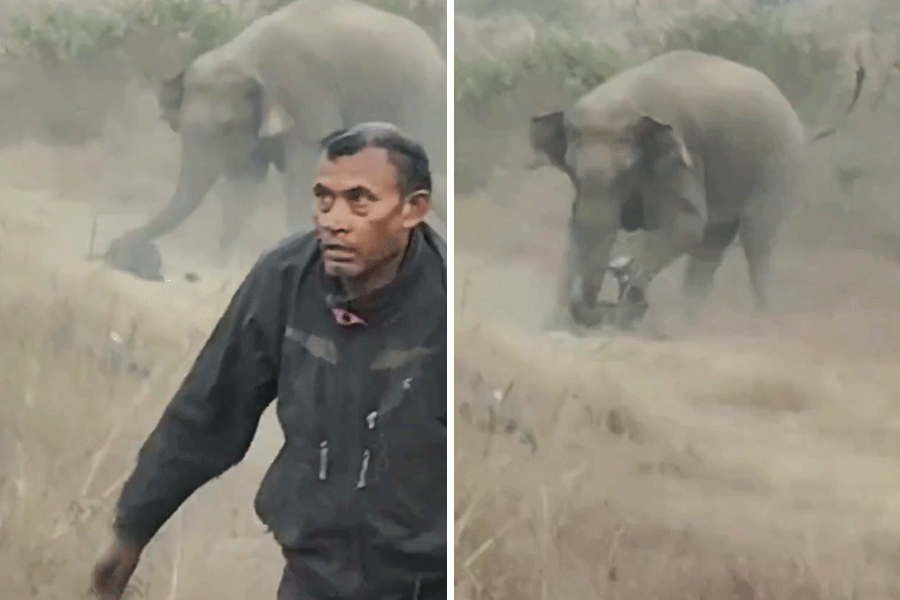 |
| Groom hunt: Anne de Courcy at her London home; and (below) photographs from the book |
 |
Anne de Courcy says her book on 400 years of the sexual engagement between the people of the United Kingdom and of India is “like the tip of the iceberg”.
In The Fishing Fleet: Husband-Hunting in the Raj (Weidenfeld & Nicolson; £20), she focuses on the memsahibs who sailed to India with the intention of marrying Englishmen serving out there, initially for the East India Company from 1600 onwards and then for the Raj after the First War of Independence in 1857.
 |
But that is only part of the story.
For a long period, it was perfectly acceptable, even desirable, for Englishmen to marry Indian women. But what happened to their children? Those who stayed in India came to be known as “Anglo-Indians”. However, from Anne’s account, it seems the children of such marriages were often sent back to be educated in boarding schools in England. It is more than likely that a proportion of these children of mixed marriages finally settled in England. Therefore, there is an equally intriguing story waiting to be told of people in the UK who have Indian ancestry but whose origins have been obscured, deliberately or otherwise, by the passage of time.
One such person who has been very much in the news recently is Lord (Sebastian) Coe, the double Olympic gold medallist who has been chairman of the London Organising Committee of the Olympic and Paralympic Games (Locog). But to be fair, he has not been in denial about his part Indian mother (unlike the singer Cliff Richard even though he was born in India).
 |
One encouraging aspect of Anne’s work is that her research is pretty thorough. But that is to be expected from a former senior features writer on national newspapers — she worked for the Evening Standard in London from 1981 to 1991 when she moved to the Daily Mail for 11 years. But unlike most other journalists, she has also managed to produce nearly a dozen historical books such as The English in Love (1939), The Viceroy’s Daughters (2000) and Debs at War (2005).
Anne, whose great ambition is to get to India one day, perhaps to a literary festival, wrote her book after a chance remark by someone alerted her to the expression, “fishing fleet”, which was new to her.
“I have 30 different sources (mostly personal diaries) which have never been seen before,” she says.
At her home in Chelsea in London (flanked by her Siamese cats named after “characters in P.G. Wodehouse novels”), she refers tantalisingly to British people of Indian origin. There is enough, one suspects, for another book or even two.
“One of our prime ministers — Lord Liverpool — had an Indian grandmother which shows she stayed (behind) in England,” reveals Anne. “She was obviously sent home to be educated and they (the children of mixed marriages) were brought up as the children of wealthy merchants, Scottish gentlefolk (and so on). The boys would usually return to get jobs in the East India Company and two of the best known Indian regiments (were) Gardner’s Horse and Skinner’s Horse — Gardner and Skinner were both the children of mixed marriages. It was all completely accepted.”
The rules of engagement changed when the East India Company became corrupt.
Anne puts the tale into historical context: “The East India Company got their charter on the last day of 1600 and gradually started trading. In those days it was always a ghastly journey by sailing ship; it took five months, people did not come home on leave, some people did not come home on leave at all, some, of course, did not survive. So what do they do for women?”
The answer: “In those days most of them had liaisons with or married Indian women and this was perfectly accepted. A lot of the high-up officers in the East India Company, people who had become generals, would marry members of Indian royal families or aristocratic Indian girls. And they would often send their children back to England to be educated.”
The author describes how the change came about: “Then the East India Company gradually was getting corrupt and when Lord Cornwallis came out (as governor general), he cleaned it up, first of all by raising salaries so that nobody need take a bribe and he then said nobody with Indian blood could hold down one of these top jobs in the East India Company. That, at a stroke, ruled out the children of mixed marriages.”
Worse strictures were to follow: “In 1800 Lord Wellesley who succeeded him said he was not going to entertain anybody who was of mixed race in Government House. So the custom of marrying Indian girls stopped and more and more English girls came out. And the name ‘fishing fleet’ was still attached to them.”
Anne says, “One of the unfortunate things about the Raj was that there was a barrier certainly in the clubs — not so much in Government House — the higher up you went the more openness there was.”
“One of the girls I interviewed had been a fishing fleet girl in the 1930s,” recalls Anne. “She said to me one of her great friends there was the son of the Maharajah of Mysore. She said, ‘I often danced with him in Government House but never in the club.’ He used to join her and her aunts and uncles in their box at the races, he was asked to dinner at Government House. He was not allowed into the club.”
Once the girls had arrived in India, another rule of engagement was there was no sex before marriage. “Usually the marriages were fixed quickly. The boy would by now be 29 or 30, longing for a wife: he has possibly been celibate all these years — he probably wants the companionship, he is lonely.”
Anne goes on: “The girl is 18-19. Quite a number did not know the facts of life because people did not talk about it then,” adds Anne. “They were absolutely virginal and innocent and the men treated them as such.”
She ponders the question: “What explains England’s strange love affair with India which persists to this day?”
“What I never, never realised till I started writing the book was the intense fascination with India from the 1600s onwards,” admits Anne. “The Victorians were riveted by it. They could not get enough — it is in their blood completely.”











